I picked up a vintage TV yesterday off kijiji that was too cool to ignore, but I need some help from tv experts to help me figure out what I have to get the most from it. I bought a Panasonic 24" Color TV from 1984 that's loaded with features. I have no doubt in my mind that this would have been one EXPENSIVE tv back then. The TV in case anyone can find any info other than replacement parts is a Panasonic PC-26K79RS.
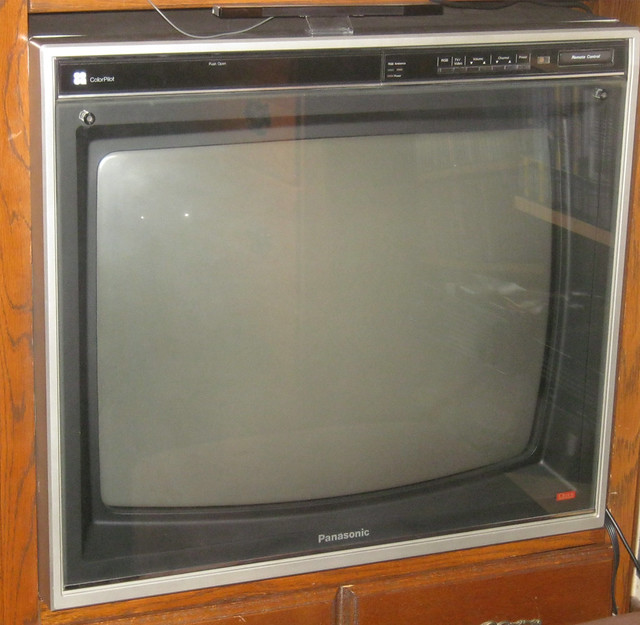
So check this tv out! it's a 24" CRT with a glass screen protector! I've never seen anything like that outside of arcade cabinets! and it's in such good shape after all these years!
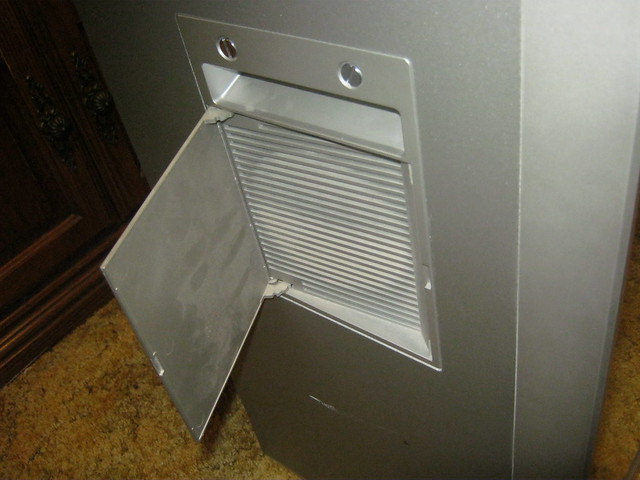
This TV oddly has some sort of windowed vents on each side of the tv. What's with that?
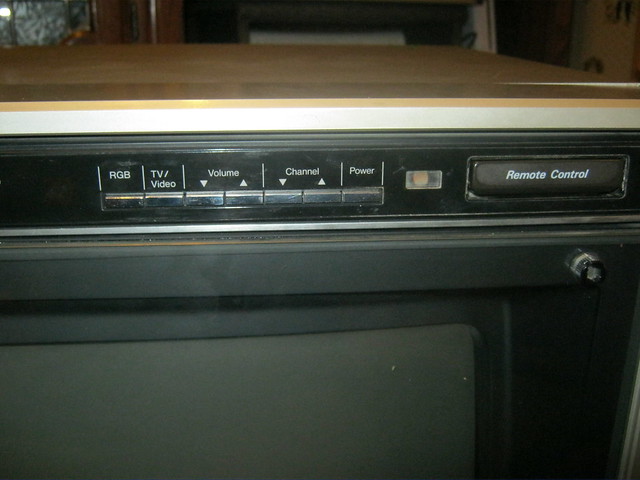
This is what caught my eye. Notice where it says RGB?
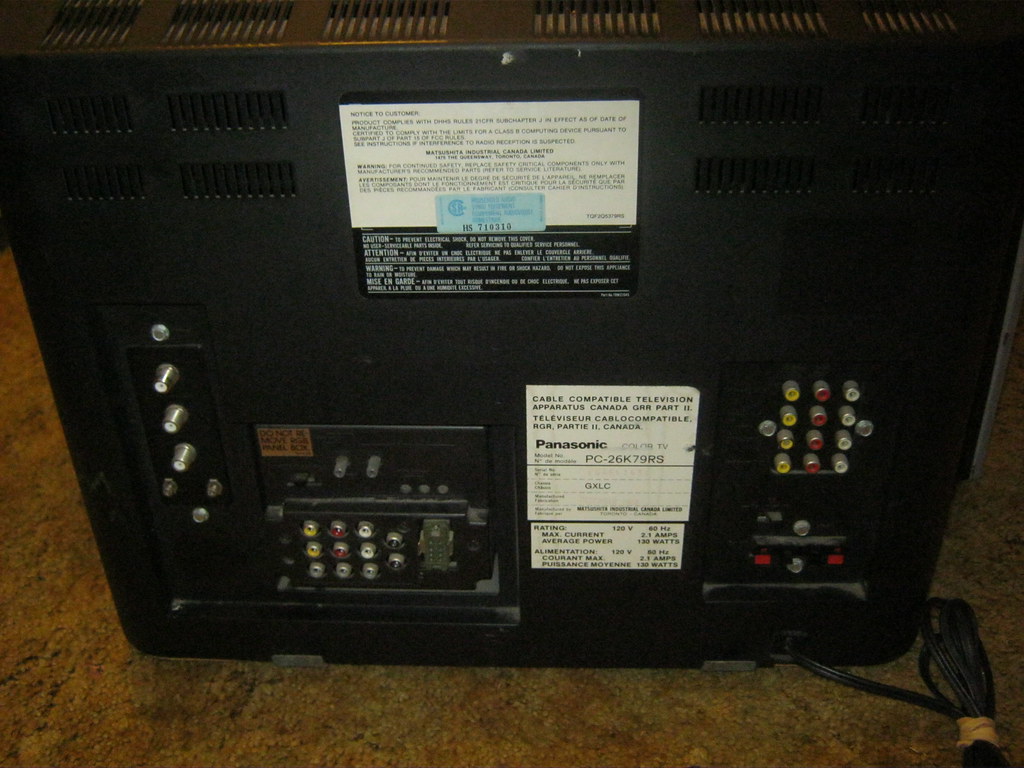
The back of the TV. Check out all the inputs this thing has!
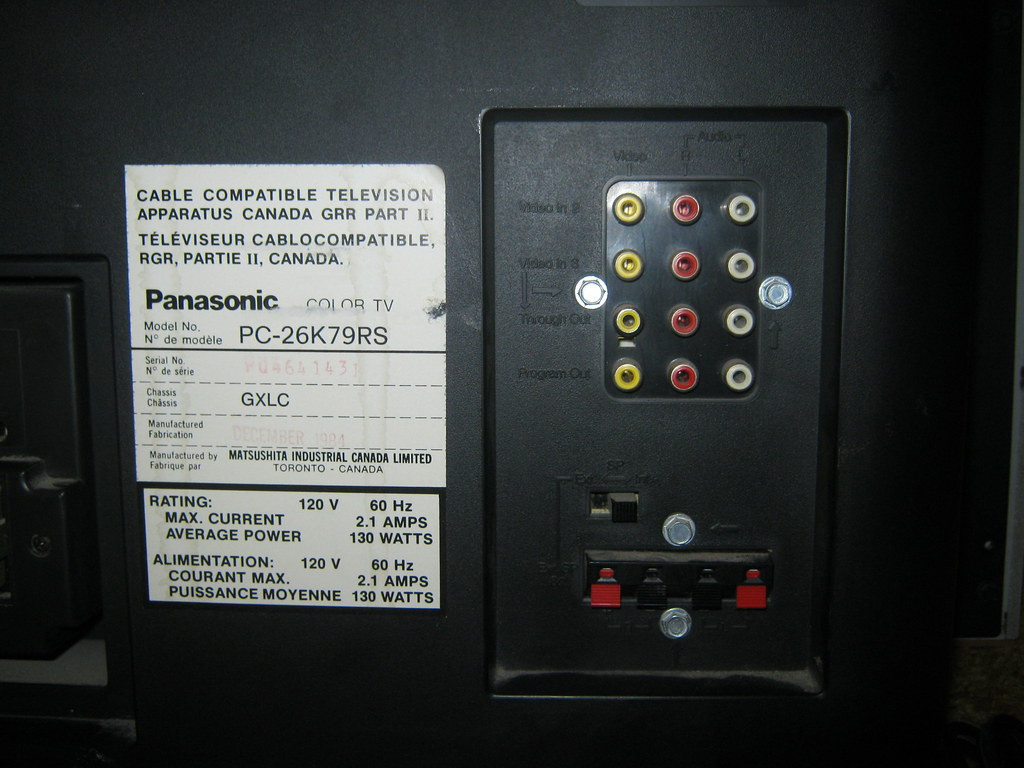
The right side of the TV has two sets of composite inputs (the first is on the right side) and two others I have no idea what they are/do: "Through Out" and "Program Out". Can anyone help me figure out what these are?
Also note that it's got hookups for external speakers. Pretty cool. I'm going to have to try that.
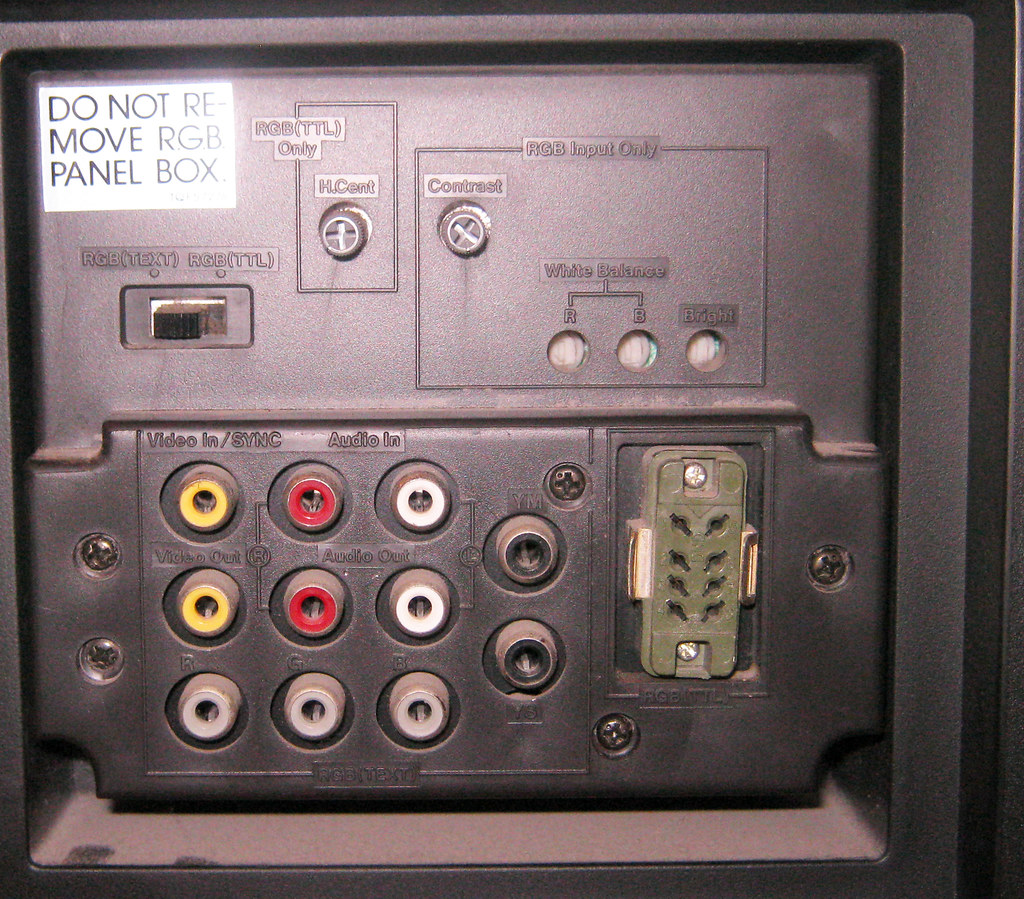
Here's the real star of this show - an RGB Panel Box(!).
I don't pretend to be anything of an expert on RGB via tvs, but I know that whatever this is it isn't SCART. I have so many questions about this I don't know where to begin.
There's a switch between RGB (TEXT) and RGB (TTL). What do each of these mean?
What is the olive green 8 pin connector?
What about all those other inputs? What about the YM and YS ports? the more info I can get on everything this panel box does the better!
I'm crossing my fingers I'll somehow be able to use this to perhaps get some RGB system to work. Perhaps there's some sort of TTL to SCART adapter? In any case I just want to figure out what I got. Thanks in advance!

So check this tv out! it's a 24" CRT with a glass screen protector! I've never seen anything like that outside of arcade cabinets! and it's in such good shape after all these years!

This TV oddly has some sort of windowed vents on each side of the tv. What's with that?

This is what caught my eye. Notice where it says RGB?

The back of the TV. Check out all the inputs this thing has!

The right side of the TV has two sets of composite inputs (the first is on the right side) and two others I have no idea what they are/do: "Through Out" and "Program Out". Can anyone help me figure out what these are?
Also note that it's got hookups for external speakers. Pretty cool. I'm going to have to try that.

Here's the real star of this show - an RGB Panel Box(!).
I don't pretend to be anything of an expert on RGB via tvs, but I know that whatever this is it isn't SCART. I have so many questions about this I don't know where to begin.
There's a switch between RGB (TEXT) and RGB (TTL). What do each of these mean?
What is the olive green 8 pin connector?
What about all those other inputs? What about the YM and YS ports? the more info I can get on everything this panel box does the better!
I'm crossing my fingers I'll somehow be able to use this to perhaps get some RGB system to work. Perhaps there's some sort of TTL to SCART adapter? In any case I just want to figure out what I got. Thanks in advance!